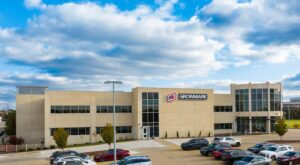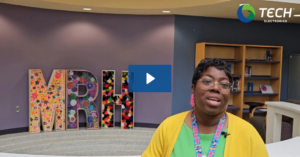By: Laura Wasson
No matter your relationship to the long-term care industry – resident, caregiver, business owner or otherwise – falls are a nightmare. The recovery process is painful for all involved, whether physically, emotionally, or financially.
The industry’s approach to fall management has historically typically been reactive – not for any lack of desire for a more proactive solution, but because technology had not yet provided one.
The paradigm, however, is shifting. The advent of predictive analytics offers a new level of sophistication in fall prevention, and not a moment too soon.
Predictive Analytics and Risk Assessment
The traditional method of determining fall risk relies on regular testing and observation by caregivers. Manual gait and sit-to-stand testing are time-consuming and an inefficient use of resources.
A more modern approach allows caregivers to gather the same information much more efficiently and utilize it more effectively. Today, bed and wall-mounted depth sensors constantly monitor a resident’s movement, interpreting the images as silhouettes, allowing them to maintain privacy while still providing caregivers useful information. The data might seem mundane to the naked eye, but when fed through an AI engine, it is automatically analyzed against hundreds of thousands of hours of similar footage. This constantly improving diagnostic tool creates a vital profile for determining a patient’s fall risk.
If the sensors detect changes in the resident’s movements that might indicate a change in overall health, the resident’s ’s risk classification changes accordingly.
Caregivers, for all their skill and diligence, may fail to identify subtle warning signs present in a patient’s behavior. This is no slight against their efforts; it is simply impossible to monitor every resident at once – or at least it was until now. Eliminating the need for manual testing, as well as the huddle time required to analyze and discuss test results, frees up caregivers to do what they do best: caring for and building relationships with patients.
Real-time Responsiveness
In addition to holistic, long-term data, this technology also equips communities to protect their residents at a moment’s notice. If sensors detect behavior that indicates a likely fall, such as a resident preparing to get out of bed unassisted, the program can proactively issue an alert to staff. This allows them to act immediately and prevent dangerous situations entirely.
The same system can also be used to issue resident health updates at regular intervals, alerting them to potential illnesses or other health risks, and improving overall health outcomes in the community.
Nobody can be everywhere at once. However, equipped with these new tools, caregivers can get closer than ever to always being in the right place at the right time.
Improved Post-Fall Intervention Efficacy
In the unfortunate event that a fall does occur, it is vital that staff responds as quickly as possible. With fall-detection equipped sensors, caregivers are immediately alerted, so residents are never left alone and in pain.
Additionally, modern fall-detection solutions allow administrators to review a HIPAA-compliant recording of the incident. Reviewing footage offers valuable intelligence about the fall – whether it was preventable, accidental or intentional, and if staff responded optimally.
Armed with this knowledge, administrators can make decisions about treatment, as well as future fall prevention and intervention policy from a position of strength, rather than relying on secondhand accounts and guesswork.
The Way Forward
For LTC communities, reorienting their entire fall management approach is not without challenges. Implementing new technology and retraining staff takes time and requires a significant financial investment.
However, given all the industry stands to gain – better health outcomes for patients, fewer claims and improved profitability – the ROI may be too great not to take the plunge.



